Este año decidí aprender a hacer tamales y a pesar de que no tenía idea que es un proceso largo, muy largo, me encantó la experiencia. Con el tiempo estoy dando la transición de encontrar más gusto a cocinar que a comer. Bueno, no tanto así, pero me gustó mucho prepararlos y para compartir la receta y tenerla en mis registros, he aquí como mi mamá me enseñó a hacer tamales.
Con un día de anticipación preparamos la carne del relleno. Corté cebolla y tomates que puse a freír con la carne de cerno extraída de las piernas de Navidad.
This year I’ve decided to learn to prepare tamales and even though I had no idea it is such a long, very long process, I loved the experience. With time I’m making the transition into finding more pleasure in preparing food than in eating it. Well, not so much, but I loved the preparation and in order to share the recipe and keep it for future references, here’s how my mother taught me to make tamales.
One day in advance we prepare the meat for the filling. I cut onion and tomatos that I then fried with the pork meat I cut from the pork legs for Christmas.
Condimenté la carne con sal, comino y el ingrediente indispensable desde que mi mamá lo descubrió: sazón completa, una serie de condimentos y hierbas que deja todo tan rico que fijo ha de ser malo para la salud.
I spiced up the meat with salt, cumin and the essential ingredient ever since my mom discovered it: complete seasoning, a series of condiments and herbs that leaves everything so tasty it must surely be unhealthy.
Se le echa además achiote y ajo.
You also add annato and garlic.
Se pone a cocinar con agua por mucho tiempo, hasta que la carne queda suave.
You add water and cook it for a very long time, until the meat is soft.
Cuando la carne se ha enfriado se desmenuza y se le quita la grasa, con las manos. Hay personas que hacen los tamales con los pedazos enteros de carne e incluso con el hueso, pero mis preferidos son estos que tienen la carne suave y sin sorpresas.
When the meat is cold you shred it and take out the fat with your hands. There are people who make tamales with whole pieces of meat and even with bone, but my favorite ones are these with soft meat and no surprises.
Para la masa se usa una bolsa de 2 lb de harina de maíz a la que se le agrega mucha agua hasta quedar muy líquida. Para que no hayan grumos cuando se cocine se tiene que colar. Luego se le agrega mucho aceite y nosotras le agregamos grasa del cerdo que estábamos horneando. Se pone encima al fuego, donde no se tiene que dejar de revolver.
For the dough you use 2 lps of corn flour to which you add a lot of water until it is very liquid. So it doesn’t have lumps when you cook it you should strain it. You then add a lot of oil and we even added some of the fat of the pork we where preparing on the side. You cook this while constantly stirring.
La masa se condimenta, mi mamá le echó sal, comino, y cebollina con culantro licuados, además de mucho ajo y cebollina finamente cortada. Como verán esta receta está lejos de tener proporciones fijas en los ingredientes pero mi mamá me explicó que el secreto para hacer bueno tamales es que la masa esté muy bien condimentada. Hay que estarla probando constantemente y cuando uno ya no sea capaz de distinguir sabores de tanto probarla hay que llamar a otras personas para que den su opinión.
You then add spices to the dough, my mom put some salt, cumin and liquefied onions with coriander, with also some garlic and finely cut chives. As you may have noticed this recipe has no fixed proportions in their ingredients but my mom explained to me that the secret for good tamales is that to have a good-tasting dough. You must check its taste constantly and when you no longer can distinguish flavors you must call other people so they can give their opinion.
La masa debe hervir y debe tener una textura manejable por lo que no hay que dudar en echarle agua o aceite cuando sea necesario.
The dough must boil and it must have a manageable texture so don’t hesitate to add water or oil when necessary.
Por otro lado se hace el recado, que es masa condimentada y coloreada aparte. Se aparta un poco de la masa inicial y se le agrega del líquido de la carne, aceite, achiote, ajo y condimentos mientras se cocina. Igual, tiene que tener buen sabor.
On the side you must prepare the “recado” which is colored and spiced dough. You set aside some of the initial dough and you add some of the liquid from the meat, oil, annato, garlic and condiments while you cook and stir it. It also has to have a good taste.
Esta es la textura que debe tener luego de estar en el fuego. Como pueden ver el aceite queda flotando, no es precisamente dietético.
This is texture it has to reach after cooking it for awhile. As you can see the oil is floating, not precisely a diet recipe.
Se cocinan unas cuantas verduritas aparte, zanahorias y habichuelas.
You have to cook some vegetables on the side, carrots and green beans.
Se cuelan y se les agrega maíz y garbanzos en conserva.
You strain it and add some canned corn and chickpeas.
Luego empieza el proceso de empacarlos. Esto se hace con hojas de plátano que se limpian con un trapo húmedo y luego con uno seco.
This is where the packing process begins. First you have to clean the banana tree leaves with a damp cloth and then a dry one.
Se cortan las hojas para empacar los tamales de manera individual. Se pone una parte de masa, un poco de recado, la carne y las verduritas. Les agregamos pasas también.
The leaves are cut in order to pack the tamales individually. You put some dough, a little bit of “recado”, the meat and the vegetables. Some raisins too.
Luego se doblan a lo largo y se doblan las esquinas. Mi mamá no los amarra, pero si tienen que quedar bien comprimidos para que no se abran cuando se pongan a hervir.
You then fold them on the long side and fold the corners. My mom doesn’t tiem them but they have to be very well pressed so that they don’t open up when they boil.
Casi al final tuvimos un pequeño inconveniente: se nos acabaron las hojas de plátano y tuvimos que improvisar. Los envolvimos en papel transparente y luego en papel encerado.
Just before finishing we had a little incident: we ran out of banana tree leaves and we had to improvise. We wrapped them up in transparent paper and then wax paper.
El último paso es ponerlos a hervir. Se ponen unas cuantas hojas de plátano en el fondo de la olla, agua, y se colocan cuidadosamente los tamales. Tienen que hervir varias horas hasta que estén firmes.
The next step is to boil the tamales. You put some leaves at the bottom of the pot, water and you carefully place the tamales. You must boil them for a few hours until they are firm.
Y este es el resultado final. Los días siguientes se tienen que estar hirviendo, una o dos veces por día para que no se pongan rancios. Nos encantaron y todo el trabajo valió la pena.
And this is the final result. The next days you have to keep on boiling them, once or twice a day so that they don’t go bad. We loved them and all the hard work paid off.
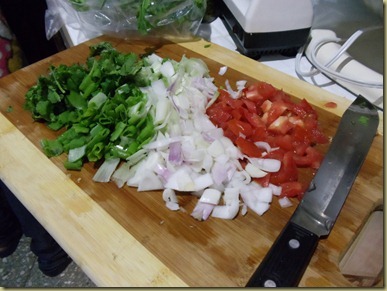
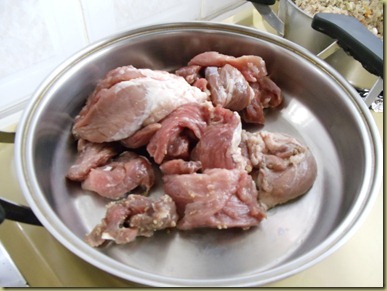
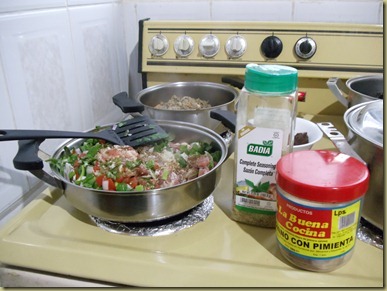
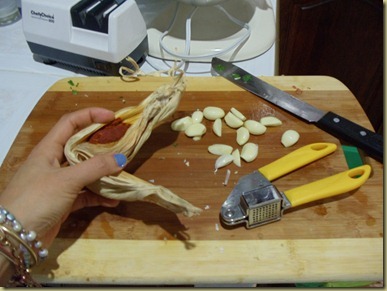
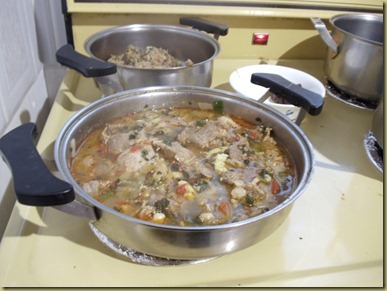
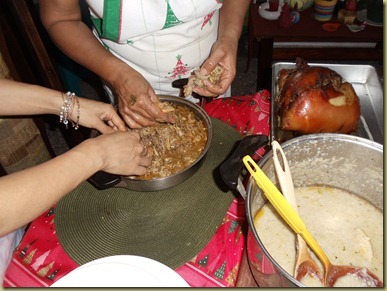
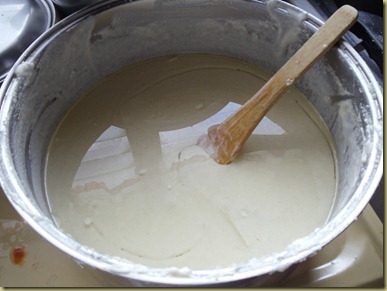
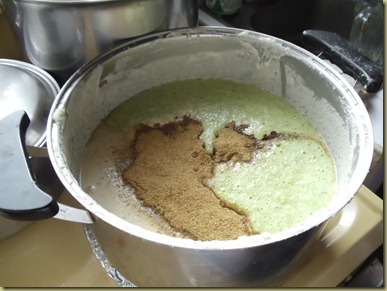
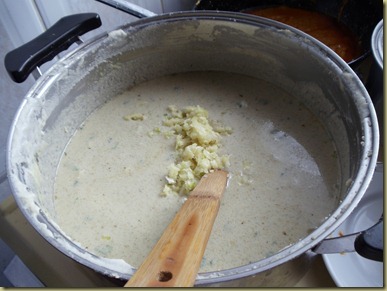

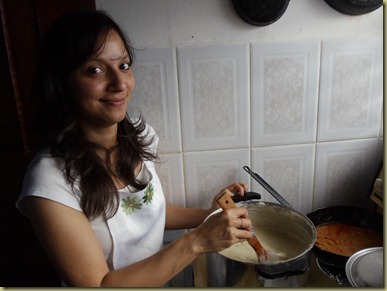
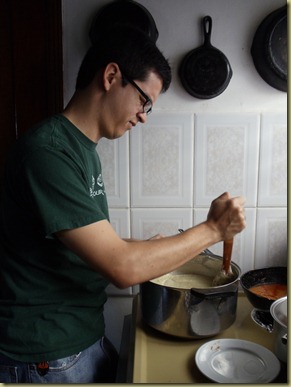

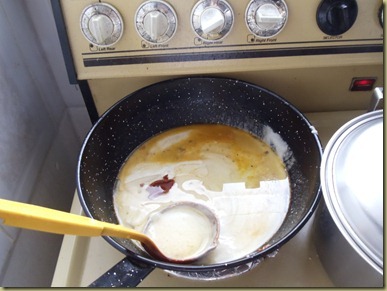
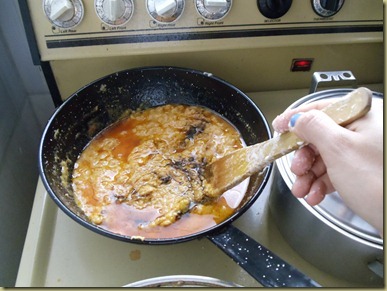
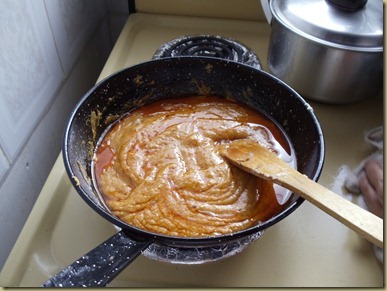
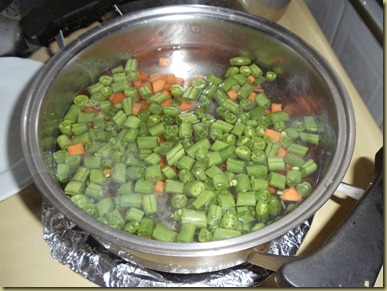
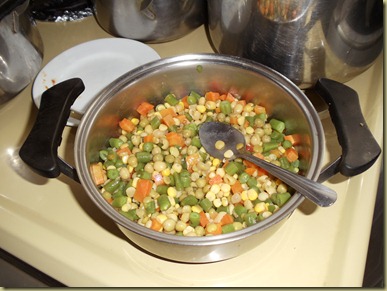

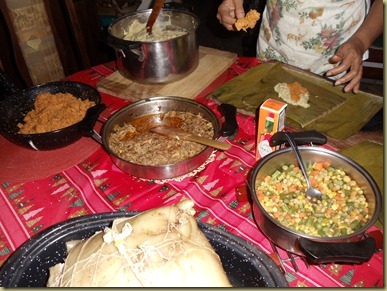
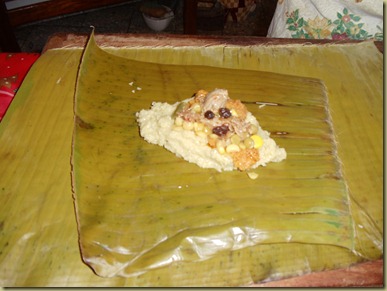
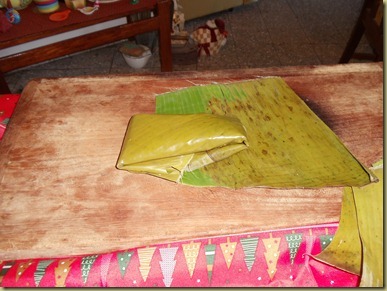
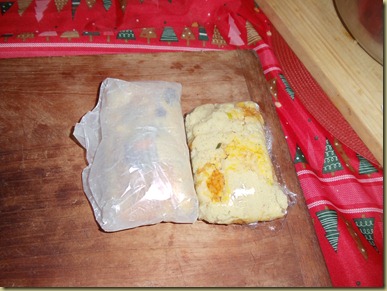
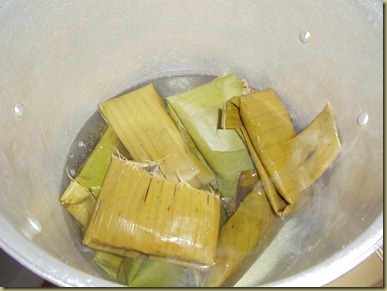
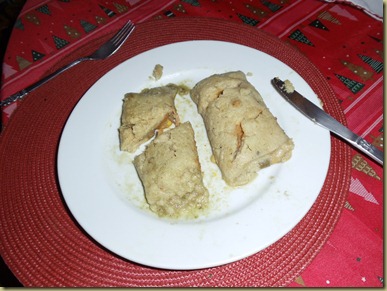

Post a Comment